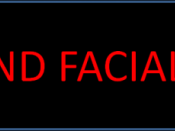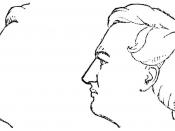Paul Ekman writes about the facial expressions of emotions. When discussing universal facial expressions, he believes that facial expressions are socially learned and are different amongst cultures. He along with his partners, conducted research within various cultures, they were doing it at the same time, but in different places. They would have the subject choose an emotion term that best fits with the photograph. They contained consistent results of agreement across over 12 western and non-Western literate cultures. The emotions used were; enjoyment, anger, fear, sadness, disgust, and surprise. In each country they videotaped subjects when they were alone, and also when they were with another person. Like they predicted, there was no difference between the cultures in the expressions shown except when an authority figure was present, the Japanese more than the Americans masked negative expressions with a smile (Ekman, p. 63-64).
Starting with a literature review, our group chose to study the eyes and the expressions they can form.
Along with this, we broke it down to dive further into the truth behind the eyes being ÃÂthe window to our soulÃÂ. In order to do this we tested it on differing culture groups. We found this significant due to the way different cultures display different emotions and how many shield emotion in different social settings.
A piece written by Albert S. King, suggests when looking at expressions of models in advertisements, the eyes play a remarkable role in the advertisement's appeal. He goes on to tell us consumers find the models when their eye are more dilated and appropriately aligned to the left or to the right, the appeal of the model used is likely enhanced. If the model's pupils are beady pinpoints, and directed to the left of right, not lining up with the message, the appeal...


